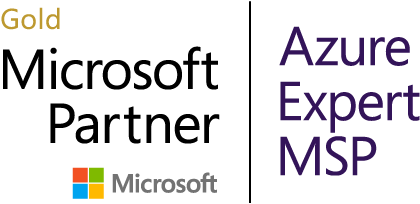 As many of you know, end of support for Windows Server 2008/R2 and SQL Server 2008 is nearly upon us.
As many of you know, end of support for Windows Server 2008/R2 and SQL Server 2008 is nearly upon us.
What does this mean? In a nutshell, no further updates will be released. And while many organizations might get by without the latest application features, no company should go without regular security updates. With cyberattacks increasing in both frequency and sophistication, storing data on unsupported versions creates a massive compliance and security risk.
When it comes to EOL for Windows Server 2008/2008 R2 and SQL Server 2008, companies can do one of the following:
- Replace: Buy the latest Microsoft application licenses and servers from Microsoft. This lets you keep your on-premises infrastructure basically as-is.
- Retire: Ditch your on-premises infrastructure entirely in favor of a cloud-based solution like Office 365 or a private cloud provider.
- Secure: This is the path of least resistance. Keep your applications safe without changing anything. Given that Microsoft is only extending support for most customers until the end of July 2019, this is not a long-term solution.
In this article, we’ll discuss the first two options, the advantages of each, and how to best leverage the tools Microsoft makes available.
Option 1: Upgrade to a newer version of Windows Server and SQL Server
Option number one provides you with updated features and perhaps most importantly, all the latest security updates. In this scenario, you would be upgrading to Windows Server 2019 and SQL Server 2017. By upgrading, you get all updates with the ability to remain 100% on-premises if you so choose.
Windows Server 2019 and SQL Server 2017 include built-in security features that harden your security posture. And while you’re updating your platforms, now is a good time to consider investing in a hardware refresh. Current server and hyperconverged infrastructure (HCI) solutions provide important security features as well as significant increases to cost efficiency and performance.
It’s worth noting that both of the new Windows and SQL Servers can be deployed on-premises, or in Azure – Microsoft recommends the latter.
Not ready to upgrade your on-premises servers yet? You might be in luck. Microsoft is providing the option to purchase three years of extended security updates to customers with Assurance or Subscription licenses under an Enterprise Agreement enrollment.
Option 2: Migrate to Azure Cloud
If you aren’t interested in the latest Windows or SQL Server features, that’s no problem. Microsoft still has you covered, with one caveat: you have to migrate your 2008 Servers to the Azure Cloud.
The good news is that end of support is the best time to perform a cloud migration. To encourage users to shift over to Azure, Microsoft is offering free extended security support for 2008 and 2008 R2 versions of SQL Server and Windows Server for three more years after the end of support deadline to help secure your workloads, regardless of your current licenses. This lets you migrate to the cloud without the stress of also having to upgrade SQL or Windows Server at the same time. It also provides you with all the platform and data services included with Azure.
Alternatively, you can move your SQL 2008 and Windows 2008/R2 to Azure SQL Database Managed Instance with no application code change and virtually zero downtime. Database Managed Instance is a managed database-as-a-service solution that never requires future upgrades and includes industry-leading SLAs. When you migrate to Azure SQL Database Managed Instance, you can take advantage of existing licenses and the Azure Hybrid Benefit. With this benefit, organizations can save as much as 55% on the cost of running the Microsoft Servers on Azure.
Have more questions about SQL and Windows Server end of support? Contact the experts at Hanu today – we’re happy to answer any questions you have regarding your specific SQL or Windows Server requirements.



